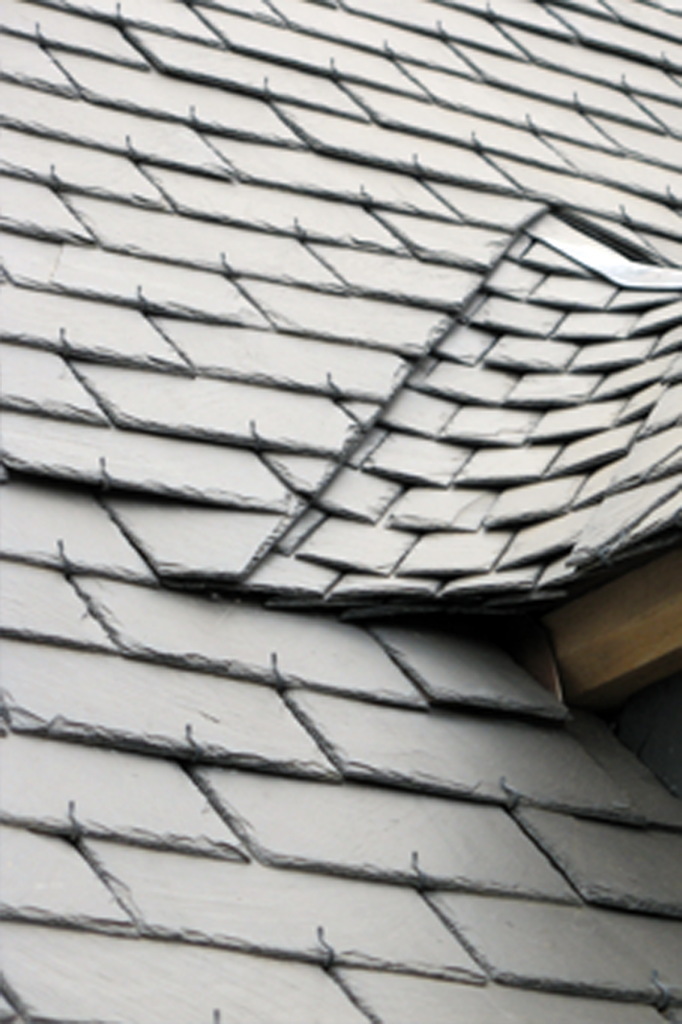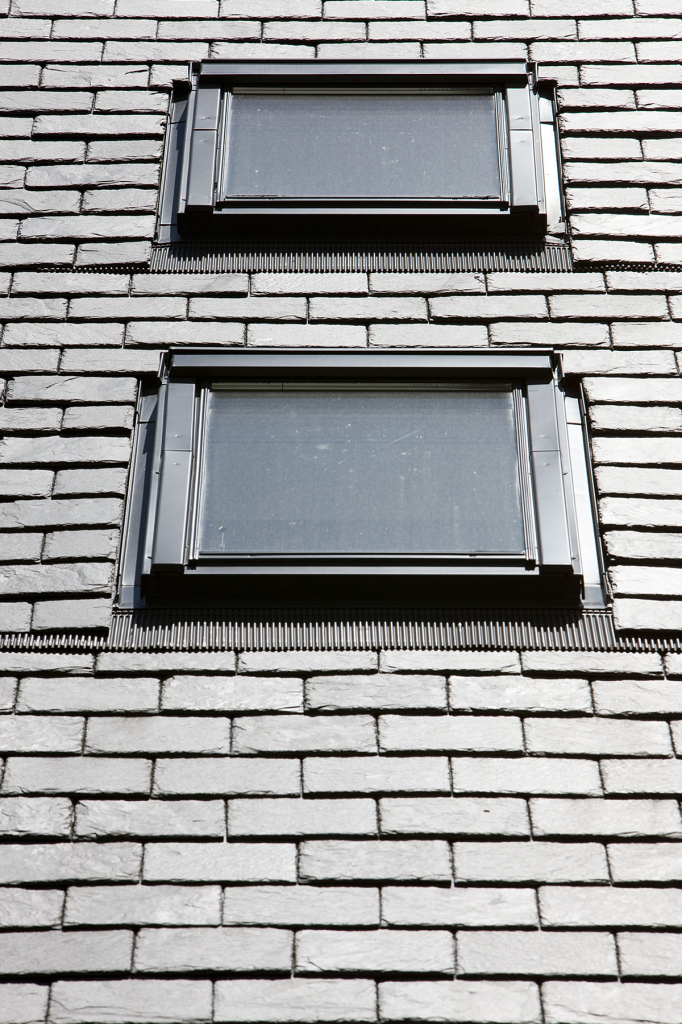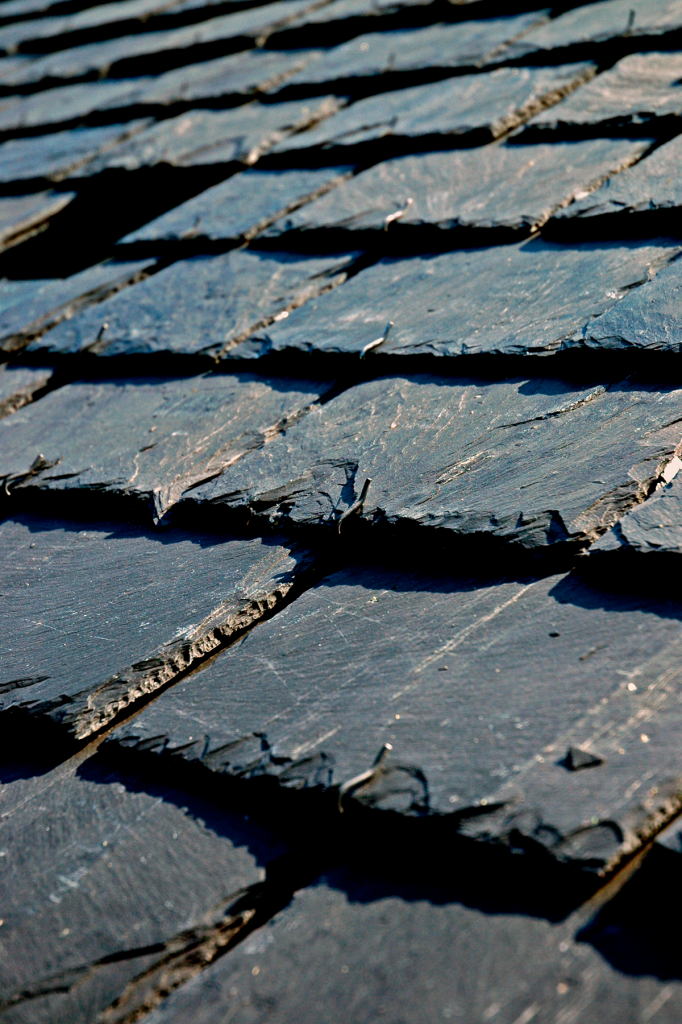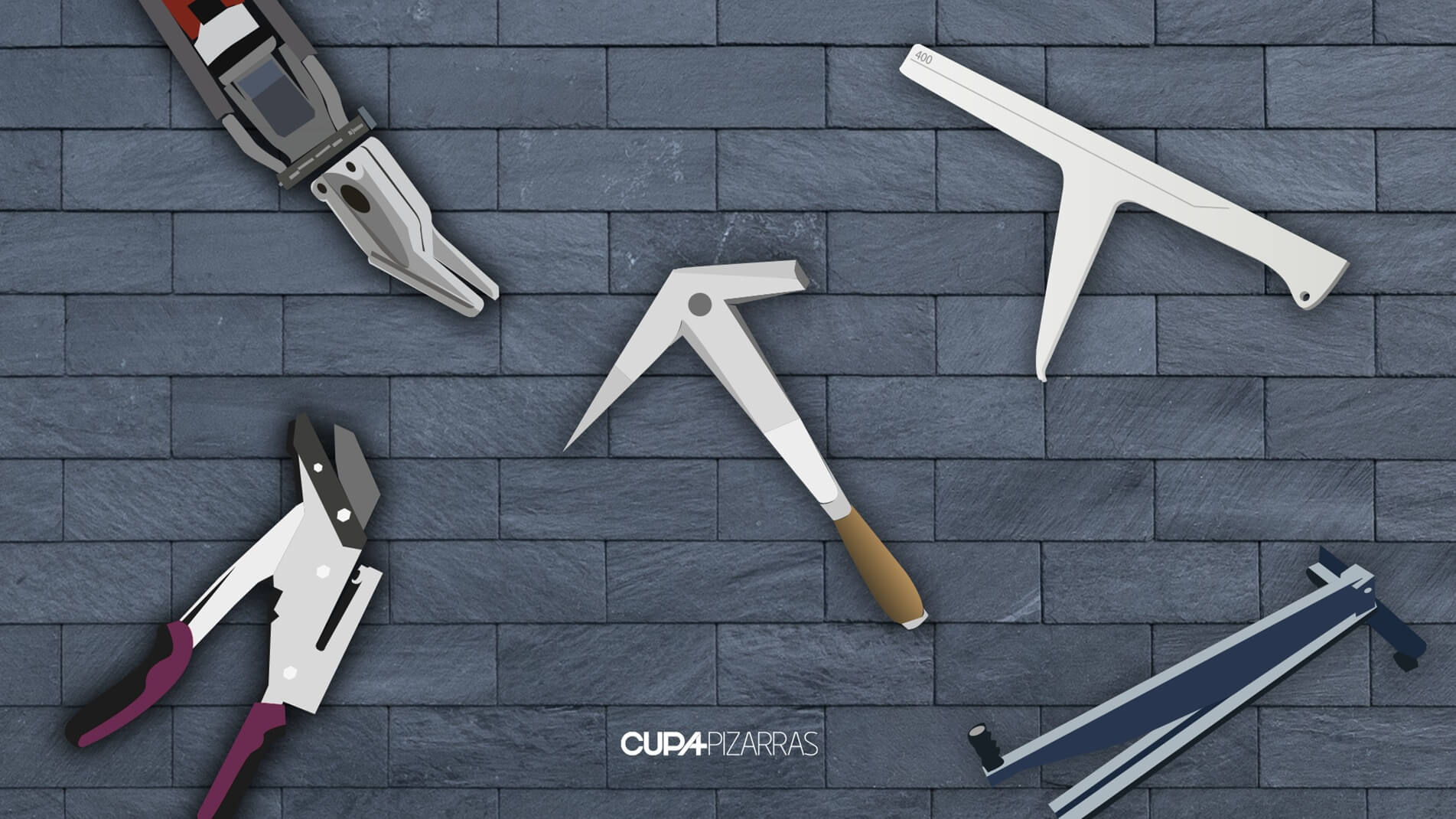How to install a slate roof
The installation of a natural slate roof depends on the slate type, the style and the design. Slates are supplied in pallets and stacked on their long side. Once removed from their pallets, slates need to be graded and sorted into three or four thicknesses. There are two methods of fixing natural roofing slates: nailing and hook fixing.
FIXING WITH NAILS

Natural slates can be supplied preholed. However, if on-site holing is undertaken, the following methods should be used.
Holing (centre fixing)
Hole from the bed of the slate (its reverse), this allows the nail head to be located in the recess on the face of the slate, which is created by the holing process. Each slate should be holed twice.
The head of the slate should lay approximately halfway on to the batten (i.e. 25mm on to the batten) leaving 25mm to nail into. A clearance of 6–12mm is recommended. Holes should be located between 20–25mm from the long edge of the slate. The underlay is then fixed and the roof marked to the batten gauge.
This may require adjusting in order to create equal course numbers. The required lap should only ever be increased not decreased.
Holing (head fixing)
Head or shoulder fixing is only acceptable for small or heavy slates. If this method is adopted it is recommended that every third course is nailed twice.
MACHINE HOLING IS PREFERABLE
Holing by hand
Wherever possible, machine holing is preferable. Holing by hand should only be considered when a small amount of slates need re-holing for repairs or when a hole needs to be repositioned in-situ.
To hole a slate with a spike hammer, position the slate flatly over a narrow iron. When measuring the position of the holes ensure the thinner end of the slate is at the top when fixed.
Holing by machine
If slates are machine holed it is recommended that only one slate be holed at a time. If the machine uses a punching method then attention should be paid to the risk of damage.
The holing machine will need to be well maintained and adjusted regularly. For this reason a boring method is preferable. Nails are required to be 20-25mm longer than two thicknesses of slate.
FIXING WITH HOOKS

In addition below a 30º degree pitch the hooks should have crimped shanks to reduce the capillary rise of water at the perpendicular joints between slates.
The use of hooks on roofs with a pitch above 75º requires special conditions. When fixing slates with hooks all perimeter slates should be hook fixed and nailed.
At hips or valleys it is important to ensure that the width of the cut slate is sufficient to allow adequate fixing. Where necessary slate and a half should be used.
Verges and abutments: alternate courses begin with a slate and a half, with the exception of those over 145mm, in which case only a slate is required. Slate and a half should be used in alternate courses.




